Those who know me know that my guilty pleasure is a glass of good wine, but also to learn as much as possible about that wine, about wines in general. I thought you might be interested to know a bit about how the oak cask influences the taste of the wine, what the difference is between wines that have come into contact with oak and those that have not, what some of the information on the label means. This might make it easier for you to choose the wine you like or to give as a gift.
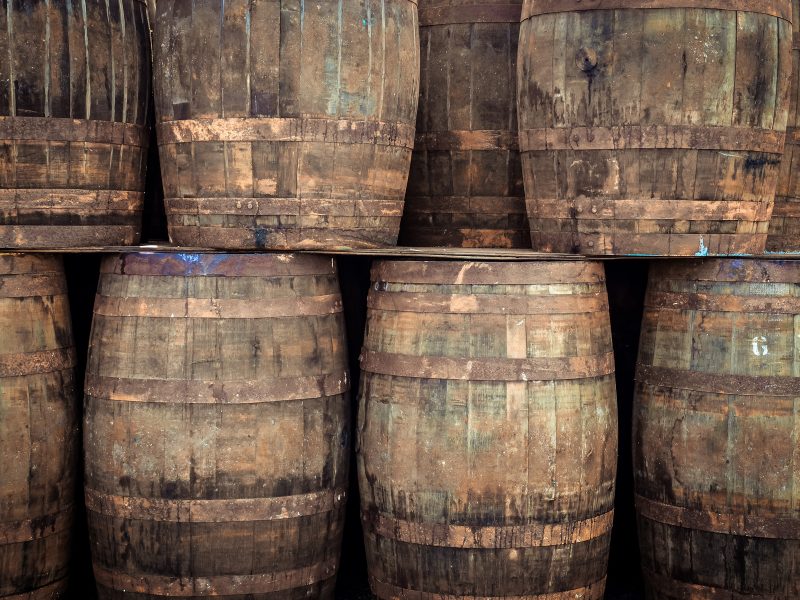
The barrel was originally used for storage and transportation
Since ancient times, people have been looking for ways to transport and store wine to make it last as long as possible. The Greeks kept it in clay amphorae and added olive oil on top to keep the air out. But the Romans discovered that wine was much better transported in oak barrels, and also that it lasted longer in them. So as early as the 3rd century they replaced amphorae with oak barrels.
The barrel has been the only container for making, transporting and storing wine for a long time. But the modern age led to its gradual replacement by glass and then stainless steel and fiberglass. However, it could not be totally replaced because, while in the past it was chosen on the basis of experience, science has gradually demonstrated the influence of the barrel and the flavors released by oak in the formation of quality wines.
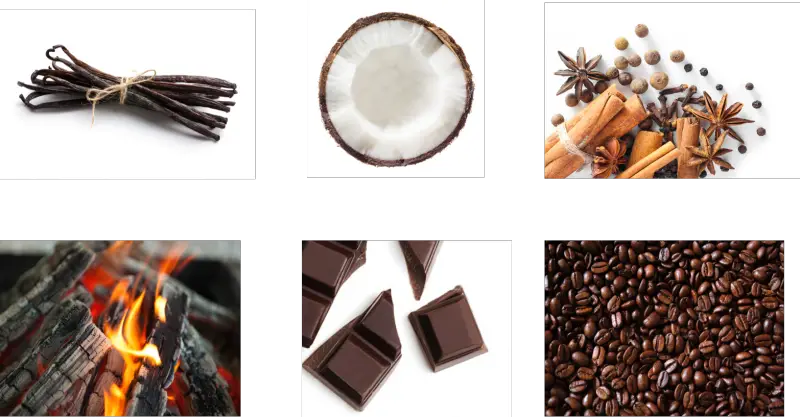
photo source: vincarta.com
Oak - the spice cabinet
About oak is said to be the spice cabinet of the winemaker. It adds a range of tastes and flavors to wines, increasing their value by making them more sophisticated. The main reasons it is chosen are:
- It is a natural antiseptic. Wine that is fermented or matured in oak barrels needs less sulphur dioxide;
- It helps to clarify and stabilize the wine. This eliminates the use of fining additives;
- In the case of red wine, it "tames" tannins, stabilizes color and aids in the aging process;
- It adds certain flavors, making the taste more complex and sophisticated.
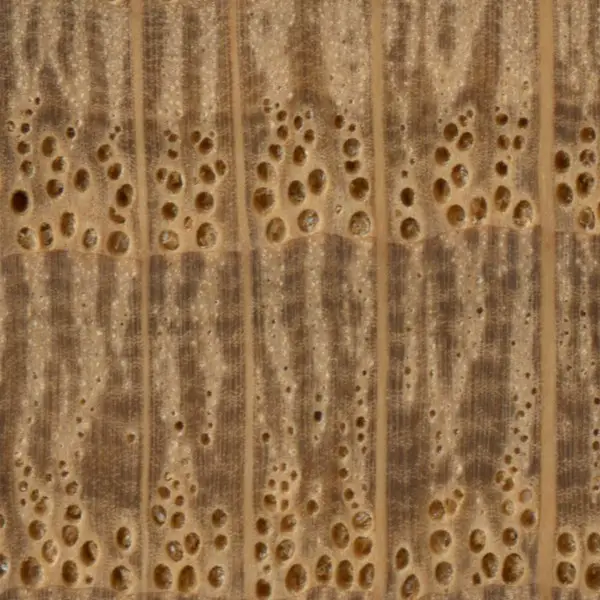
photo source: wood-database.com
European oak versus American oak
Wine kept in oak barrels is not hermetically sealed as it is in a glass or stainless steel container. Through the pores of the wood it comes into contact with air, which is why the size of these pores is very important. Wine casks are made from two types of oak, European oak and American oak. European oak has a finer texture and smaller pores, while American oak is coarser and the pores are larger and more numerous. The biggest suppliers of European oak are France, Croatia and Hungary.
If the wine is in a European oak barrel, the amount of air that penetrates is less, fermentation is slower, and the resulting wines have a finer, more subtle flavor. In the case of American oak, more air enters, fermentation proceeds more quickly and the wine tastes harsher, rougher, more masculine.
The size of the barrels is also important because of the amount of air the wine comes into contact with. In small barrels the wine has more contact with air than in large barrels. Wines such as Amarone or Brunelo di Montalcino, Italian red wines that are kept in very large barrels (botti) with a capacity of 1000 l to 15000 l have a strong and manly taste.
Water and alcohol also evaporate through the pores. It is estimated that 10% is lost in a year from an average 225 liter barrel. Experts call this quantity angels' side. Losing this amount intensifies the concentration of flavors. In the case of red wines, which are aged for a longer period, new wine is added every year so its taste becomes very intense and it needs hours after it has been opened to bring out all the flavors. It is therefore recommended to put it in special glass decanters during this period.
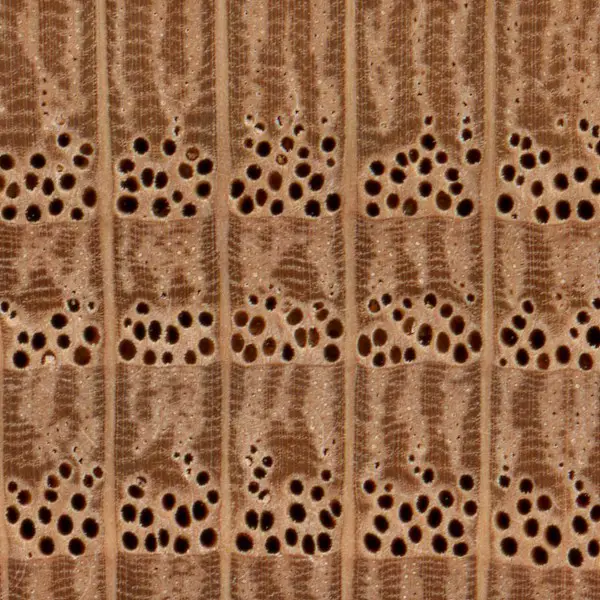
photo source: wood-database.com
Controlled indoor barrel burning releases great flavors
I said that oak adds a range of flavors to wine. They can be vanilla, coconut, cinnamon, cloves, cloves, nutmeg, cedar, chocolate, coffee, fig, fig, burnt wood, smoke. All these flavors come only from the wood and to bring them out the barrel is superficially burned inside.
By burning the lignin decomposes releasing all these flavors. Depending on the wine maker's requirements, the wood may be burned more or less.
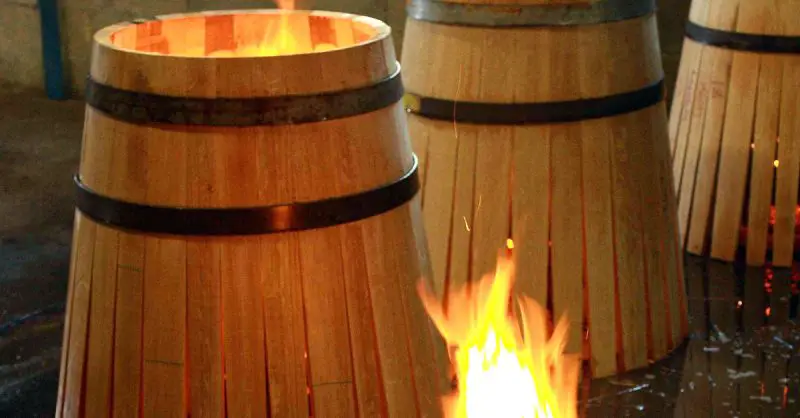
photo source: winefolly.com
Cost-saving options
The elaborate technology used to make the barrels, the slow growth of the oak (at least 80 years for harvesting), the fact that only two barrels can be made from the trunk of an oak tree and the fact that the process takes 36 months (washing is done to remove unwanted tannins), make the barrels very expensive, which is reflected in the price of the wines. The barrels can only be reused for three years, after which they lose all their natural flavors, acquire the wine's natural aromas and need to be replaced.
That's why some producers choose to flavor the wine by using pieces of oak mixed into the wine during fermentation or aging. The method is approved almost everywhere in the world. The label on these wines does not say they have been aged in barrels - barricaded there oak influence- taste influenced by oak or oak maturation- oak aging.
Oenological tannins extracted from wood, also approved in most countries, are sometimes used. You can identify that such tannins have been used when the wine tastes the same regardless of the year of production. Wine is made from grapes, and grapes are influenced by sun, rain, cold, terroir (the soil in the area). They can't taste the same every year. Sometimes they are more watery and less sweet, sometimes sweeter and drier. This is reflected in the wine.
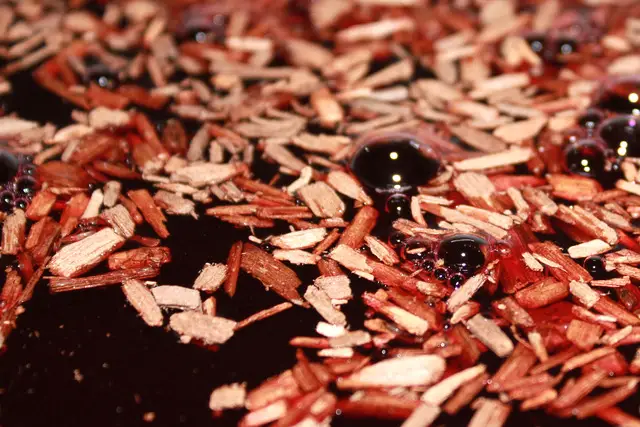
photo source: winefolly.com
The taste of oak in wine is not unanimously appreciated
Not everyone appreciates the influence of oak in the taste of wine. While there are tannins in red wines anyway, and the influence of oak is not that important, for white wines it is very noticeable. Especially for wines aged in American oak barrels.
Experts say the difference is best seen in Chardonnay. While the young wine, fermented and kept in stainless steel vats, tastes light and fruity, the wine kept in oak barrels is harder, creamier and has flavors of vanilla and butter. The color is also different. The one kept in stainless steel is pale yellow, while the one kept in oak barrels is dark yellow.

photo source: thetestinggroup.wordpress.com
Not only oak barrels are used for wine. Over time, both acacia and chestnut have been found to positively influence the taste of wine. But oak remains by far the most widely used wood for barrel making and the one that gives wine its greatest and most sophisticated range of flavors.
I hope you find the above information useful. As always, additions are welcome. And if you have any questions or queries, please leave them below in the space provided. I will be sure to reply.




































Congratulations for the documentary.From the content, apart from the excellent technical aspect, the passion shines through.On this occasion, I fell in love with the oak barrel.
Thank you. I was beginning to think I was the only one who was passionate about such things :)
Try an ash barrel for white or red wines! It has no equal!